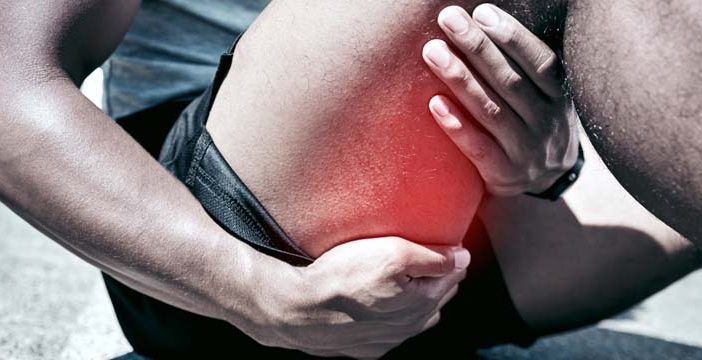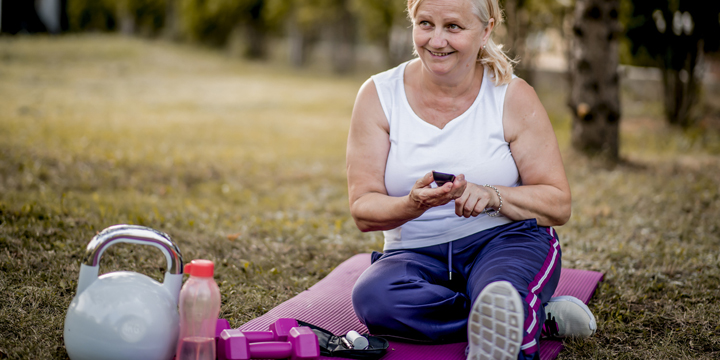
Exercise plays a key role in maintaining a healthy lifestyle for everyone, but it is particularly crucial for individuals with diabetes. Therefore, understanding how to manage physical injuries caused by exercise is essential. You may find it surprising to hear what the latest recommendations are, and that ice may not be the best choice.
If you have suffered a minor muscle or joint injury, you have more than likely come across the RICE acronym. It stands for Rest, Icing, Compression and Elevation. This system for self-treating muscle, tendon and ligament injuries was created in the late 1970s. It is a completely passive way of healing: you try to make the injured tissue comfortable and let it fix itself.
Rest was recommended for up to several weeks, all the way to the point of no pain. Icing was necessary to keep the swelling down (we all know swelling is bad, right?), as was compression with a bandage. Elevation improved drainage to further reduce swelling.
Research over the last half century since the introduction of RICE has shown that passive management of an injury is not enough. It leads to poor healing, the potential formation of scar tissue, nagging long-term pain and loss of strength. Icing an injured site may actually be counterproductive, leading to reduced blood flow and fluid circulation, and increased healing time.
Why is ice not the best choice for people with diabetes?
When it comes to using ice for exercise injuries, people with diabetes need to take additional precautions due to potential complications related to nerve damage (neuropathy) and circulation issues that can affect healing.
Neuropathy means that you may have reduced sensation and therefore may not notice when ice becomes too cold, leading to skin damage or frostbite. If you do use ice, even for short-term pain, always check your skin frequently during use.
Diabetes affects the circulation and ice can constrict blood vessels, further reducing circulation in areas that may already have poor blood flow.
Diabetes itself can slow the healing process, so any injury that doesn’t improve within a few days should be evaluated by a healthcare professional.
What are the alternative protocols for managing injuries now?
What should you do instead of the RICE protocol if you suffer a minor injury from exercise? Try the new PEACE and LOVE protocol! Created in 2020 by a Canadian professor of physiotherapy, this new approach to injury management aims to make the recovery process much more active, faster and effective over the long-term.
Here’s a breakdown of each letter in the PEACE and LOVE acronym:
P = protect: rest the injured tissue, but only for the time needed to avoid aggravating the injury. Extended rest will jeopardize recovery to full strength and mobility. For minor strains and sprains a rest of 3 to 4 days is recommended.
E = elevate: a carryover from the RICE protocol, elevation does not have strong evidence to support it, but it is also a low-risk activity that may be helpful for some in the immediate aftermath of an injury.
A = avoid anti-inflammatory medication: inflammation is necessary to help heal damaged tissues. Inflammation has a bad rap in general, but it is specifically important for healing injuries; shutting it down with ibuprofen or a similar anti-inflammatory medication is very counterproductive.
C = compression: this is another holdover from RICE, and another low-evidence but no-risk self-treatment. Wrapping a load-bearing injury such as an ankle sprain or foot issue can help stabilize the area and make walking easier.
E = educate: learn about your injury, understand how long recovery actually takes (it’s usually longer than you might think), and ask your physical therapist or doctor to explain what happened to you and what they are doing to help you. Most injuries don’t have a quick and easy solution.
After the initial few days of getting injured, it’s time to get active! This is where the LOVE part of the protocol comes in:
L = load: light movement should begin as soon as the reduction in pain allows it. This may be as little as bending your ankle or knee forward and backward without any external resistance. Movement builds tissue tolerance to stress, increases fluid flow and reduces pain sensitivity.
O = optimism: after an injury, it is easy to get down on yourself, or your ability to play sports or do the activities you enjoy. Research has shown that long-term pain and recovery often has a bigger psychological component than a physical one. Staying positive and not catastrophizing the situation is as important for long-term improvement as the active recovery segment.
V = vascularization (through cardiovascular exercise): engaging in easy but consistent cardio that is pain-free should start within a few days of getting injured. Aerobic exercise helps reduce pain, increases blood-flow to the damaged tissues and builds motivation for further exercise as the injury heals. Cycling and swimming are great ways to get cardio while injured, depending on your individual situation.
E = exercise: Once the injury has settled down, it’s time to start loading the area! Without proper loading, it is difficult to get back your previous strength, mobility and endurance. Exercise also helps with preventing recurring injuries by making sure the affected tissue knows how to handle high loads.
It’s always discouraging to get injured when exercising or playing sports, but it’s not the end of the world! A competent physiotherapist that specializes in sports injuries is your best bet for good care, as is a good athletic therapist. Just make sure they know and follow the PEACE and LOVE protocol, or something close to it! Always consult your diabetes healthcare team if you’re unsure about the best approach for your specific condition or if healing seems delayed.


